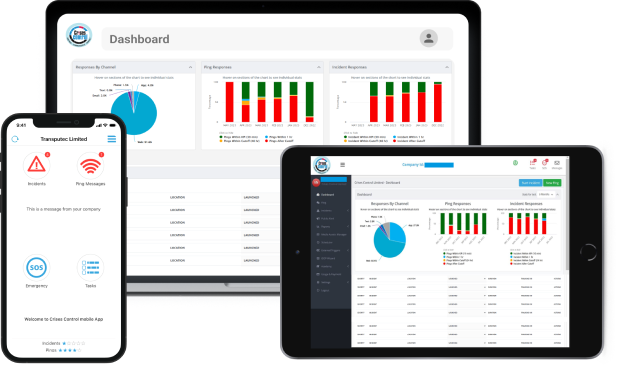Written by Anneri Fourie | Crises Control Executive
Why Martyn’s Law for SMEs
Many small businesses, community centres, and places of worship operate under the radar when it comes to national security. They’re not stadiums or concert venues, and they don’t attract international headlines. But they do bring people together. And that, unfortunately, makes them potential targets for those wishing to cause harm.
Following the devastating Manchester Arena attack in 2017, a public push for stronger safety laws led to the proposed Protect Duty, now commonly referred to as Martyn’s Law. Named after Martyn Hett, one of the victims of the attack, the law is designed to ensure that all venues, large or small, are better prepared to prevent and respond to terrorist incidents.
The problem is that many smaller organisations feel overwhelmed. They may not know where to start, what’s required, or how to comply without overstretching their limited resources. But the law will apply to them, and the responsibility to act is clear.
The solution lies in simple, practical steps. Understanding what the law expects, putting basic procedures in place, and using tools like Crises Control to handle the communication, training, and emergency response planning. It doesn’t need to be complicated or expensive, but it does need to be taken seriously.
What Is Martyn’s Law and Who Needs to Comply?
Martyn’s Law sets out requirements for how venues and organisations should prepare for and respond to potential terrorist threats. It applies to any location that is publicly accessible and where people gather.
The law introduces two main tiers based on the size of the venue:
Standard Tier (100 to 799 people)
If your premises has a capacity of 100 or more people, even occasionally, you fall into this tier. This includes many hospitality venues, community centres, and places of worship. You’ll be expected to take proportionate steps to reduce risks and improve emergency preparedness, based on official guidance once the legislation is finalised.
Enhanced Tier (800+ people)
Larger venues will face stricter requirements, including formal counter-terrorism plans and coordination with law enforcement. Most SMEs will not fall into this category, but it sets the tone for the direction of public safety regulation.
What Small Organisations Must Do to Comply
The Standard Tier doesn’t mean small businesses can ignore the law. It simply means the expectations are scaled appropriately. Here’s what’s involved:
Step 1: Carry Out a Risk Assessment
Understanding your vulnerabilities is the first step. Look at how people move through your venue, where crowds gather, and what security measures are already in place. You don’t need to be a security expert to identify potential risks, but you do need to take a structured approach.
Crises Control supports this process by giving you a central place to store, review, and update your risk assessments. Having all your documentation in one secure platform means your plans stay organised, accessible, and ready when needed, whether for training, incident response, or compliance checks.
Step 2: Create a Basic Emergency Plan
You’ll need a documented plan that outlines how to respond in a crisis. This should include:
-
- Evacuation routes and procedures
-
- Lockdown steps
-
- Contact details for key staff or emergency services
-
- Roles and responsibilities for your team
This document should be accessible and understood by everyone. It must also be reviewed and tested regularly.
Step 3: Train Your Staff
People are your first line of defence. Your staff and volunteers need to know:
-
- How to recognise suspicious behaviour or packages
-
- What to do if something doesn’t feel right
-
- How to follow “Run, Hide, Tell” guidance
-
- How to use internal communication systems during a crisis
While training may be delivered externally, Crises Control helps reinforce those learnings by making emergency procedures easy to access and act on. Whether staff are full-time, part-time, or volunteers, the platform ensures everyone is kept in the loop with clear communication, role-based alerts, and structured response actions when it matters most.
Step 4: Implement a Communication Plan
One of the most critical aspects of responding to a threat is being able to communicate quickly and clearly.
In an emergency, your team needs to know what’s happening and what to do next. Crises Control’s platform lets you send alerts through text, email, app notifications, Microsoft Teams or automated voice calls. You can alert everyone or escalate to specific roles depending on the incident.
Step 5: Maintain Records and Review Regularly
It’s important to keep records of your training, drills, risk assessments and plan updates. This is not just for compliance, but also for learning and improving over time.
Crises Control logs every action taken in the system with a timestamp, creating an easy audit trail when it’s time to prove your compliance.
How Martyn’s Law Impacts Specific Venue Types
The law may apply across the board, but its impact varies depending on how your venue operates. Here’s how it affects some common types of small organisations:
Community Centres
Many community centres are volunteer-run and serve a wide range of age groups and activities. These venues often have open doors, limited budgets and no formal emergency procedures.
What’s needed:
-
- Flexible emergency planning
-
- Volunteer-friendly training
-
- Simple communication tools
Crises Control provides digital tools that are easy to roll out, even with minimal staffing or technical experience.
Hospitality (Pubs, Cafés, Restaurants)
These businesses tend to have high footfall, particularly at weekends or during special events. Staff may be young, part-time or temporary. Security procedures often fall by the wayside during busy periods.
What’s needed:
-
- Quick, mobile-based training modules
-
- Fast alert systems for on-site staff
-
- Clear evacuation or lockdown procedures
Crises Control’s mobile app makes real-time alerts and role-based actions easy to manage, even during peak hours.
Places of Worship
These are open-access venues, often welcoming large groups and vulnerable individuals. Leaders must balance being open and welcoming with the duty to protect attendees.
What’s needed:
-
- Discreet alert systems
-
- Plans for mass evacuations
-
- Coordination with volunteers and security stewards
Crises Control enables silent alerts, so incidents can be escalated without creating panic, and ensures everyone involved knows what to do.
Debunking Common Misconceptions
Many small organisations still think Martyn’s Law won’t apply to them or that compliance is out of reach. Let’s clear up a few of these concerns:
“We don’t have 100 people all the time.”
The law is based on maximum capacity, not daily attendance. If you can host 100 people, even for one event, you may fall under the Standard Tier.
“We can’t afford this.”
Not complying could lead to fines, legal issues, or worse. Crises Control is designed to scale to the size of your organisation, making effective tools accessible and affordable.
“It’ll make people feel unsafe.”
In reality, visible preparedness builds trust. Most visitors feel reassured knowing that plans are in place if something goes wrong.
What Happens If You Ignore the Law?
Choosing not to act isn’t just a legal risk. It’s a human one. The consequences of inaction can include:
-
- Delays in responding to an incident
-
- Increased harm or casualties
-
- Reputational damage
-
- Legal and financial penalties
But beyond those outcomes, the bigger cost is the trust and safety of the people you serve. Compliance with Martyn’s Law isn’t about paperwork. It’s about caring enough to prepare.
How Crises Control Can Help
Crises Control helps small organisations stay compliant in a way that’s practical, affordable and effective. Our platform is:
-
- Simple to use, even for non-technical staff
-
- Scalable, so it grows with your needs
-
- Comprehensive, covering planning, training, alerts and audit trails
-
- Supported by experts, so you’re not left to figure it out alone
You won’t need to reinvent your systems or hire security consultants. We’ve done the hard work for you, providing templates, tools and real-time support to help you focus on what matters most.
Conclusion: Take Control of Your Readiness
Martyn’s Law marks a major step forward in public safety. It’s a call for all venues, no matter their size, to take responsibility for the people who walk through their doors.
For small organisations, that can feel like a heavy lift. But with the right tools, it becomes manageable. You don’t need a large security budget or a background in emergency planning. You just need to take that first step.
Crises Control gives you the tools and support to do that with confidence.
Book your free demo today and find out how we can help your organisation stay prepared, protect your people and comply with Martyn’s Law.
Request a FREE Demo

